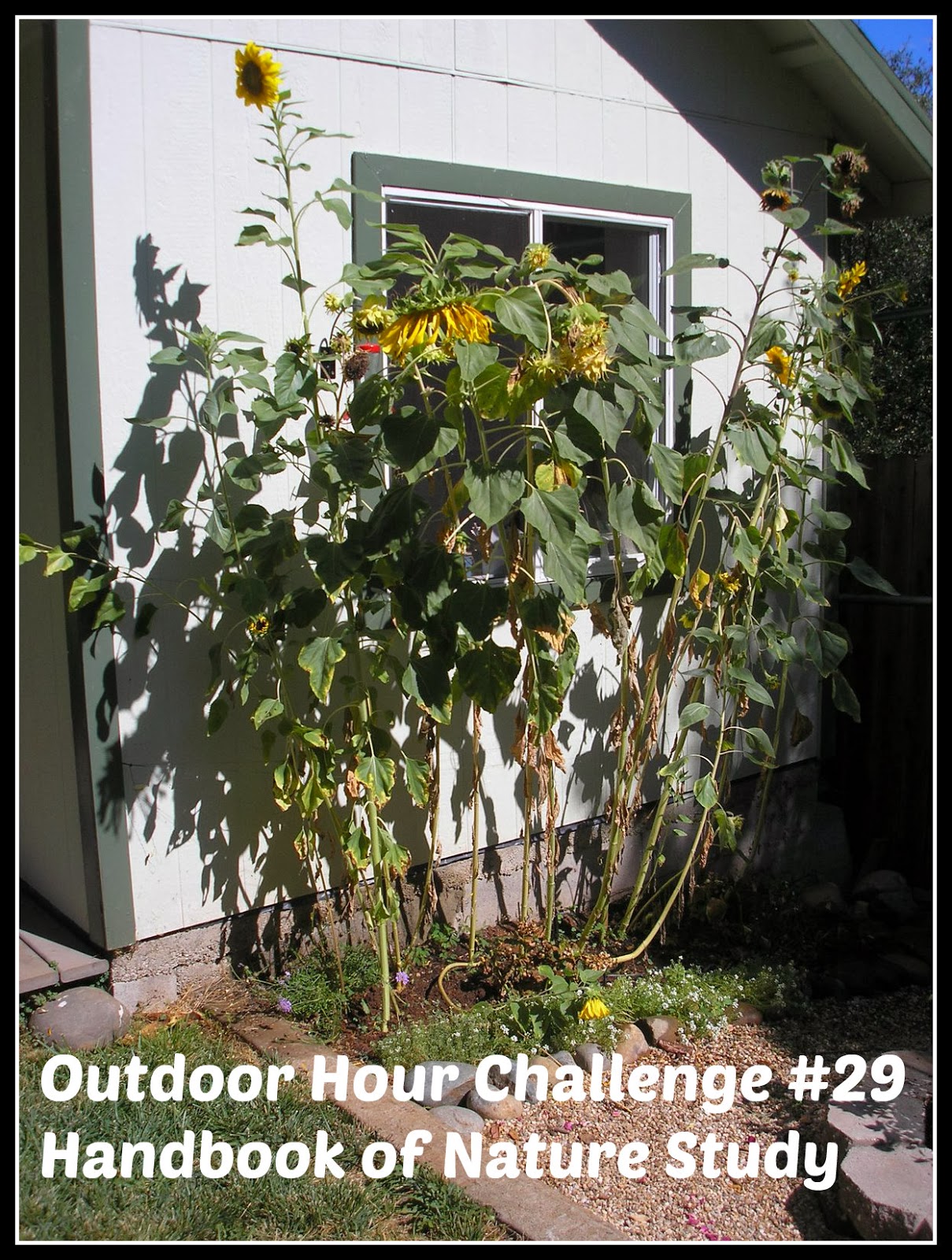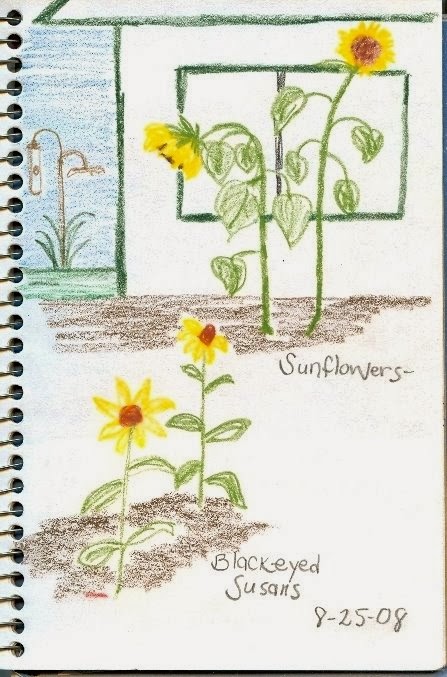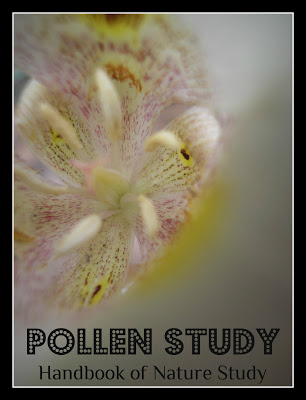We studied composite flowers earlier in the year so it was fun to compare those flowers with the sunflower from our garden.
We also shared some of our nature journal entries with the sunflowers sketched in.
Now we were ready to go through Anna Comstock’s directions for a more intensified study of the sunflower. If you take the time to go through this study, you are going to learn many fascinating and amazing things about the ordinary sunflower. The design of the Creator is all over this flower…I think we could go through this study again next year and still find loads of things to be amazed by.
“…while at the center lie the buds, arranged in an exquisite pattern of circling radii, cut by radii circling in the opposite direction; and at the very center the buds are covered with the green spear-points of their bracts.”
Handbook of Nature Study, page 576
“All this flower has to do is to hold its banner aloft as a sign to the world, especially the insect world, that here is to be found pollen in plenty, and nectar for the probing.”
Handbook of Nature Study, page 575
“But the stems are very solid and firm, and the bend is as stiff as the elbow of a stovepipe, and after examining it, we are sure that this bend is made with the connivance of the stem, rather than despite it.”
Handbook of Nature Study, page 576
“They finally become loosened, and as the great stem is assaulted by the winds of autumn, the bended heads shake out their seed and scatter them far afield.”
Handbook of Nature Study, page 576
We followed the book’s directions and found examples of each of the kinds of florets as described on page 577 in the Observations section. We learned so much just by trying to find each of the different kinds and then really examining them. If you need more help, there is a diagram on page 575. We learned about the “community”of flowers that make up the sunflower heads.
Here is one of my nature journal entries that features my sunflowers. This summer has been filled with lots of sunflower times and I enjoy going back through my journal and seeing their progress.
It is a sad time when the sunflowers are finishing up their life cycle. I am going to be gathering a few handfuls of seeds to save for next year’s garden. The flower heads will be left out in the garden for the birds to feast on and then later this fall, we will do our garden clean up and pull out the remains. This is the first year that we have had finches all summer eating the leaves of our sunflowers. It is amazing that those tiny birds can sit on the leaves and the leaves don’t bend over. The finches must be truly lightweight to accomplish this.
I hope everyone else is enjoying their sunflower study this week. If you didn’t get a chance to do it this year, there is always next year! Plan ahead!























